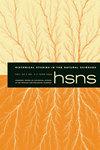“通往原子和平与富足的乐土之门”
IF 0.3
3区 哲学
Q2 HISTORY & PHILOSOPHY OF SCIENCE
引用次数: 1
摘要
大多数国家对促进和平利用原子能作为社会和经济发展的工具持怀疑态度。在它扎根的国家,它的接受是由少数精英演员推动的。在墨西哥,最引人注目的是墨西哥国立自治大学校长Nabor Carrillo和总部位于加拿大的墨西哥电力公司总裁William Draper Jr.。所谓欠发达国家的核技术成为诸如密歇根纪念-菲尼克斯项目、原子工业论坛和和平原子发展基金等非政府组织的关键领域,这些组织在1954年后与美国政府机构如外交行动管理局密切配合,在执行新的外交原子政策方面发挥了相关作用。1955年被国际合作署取代。在没有签署明确的政府间协议的情况下,墨西哥官员能够克服国内障碍和与北方邻国的历史不信任,获得核专业知识和大宗商品。显然仅限于大学和私营企业,这次谈判证明并支持了教育和培训第一代墨西哥核工程师作为安娜堡密歇根大学凤凰计划的一部分。与此同时,墨西哥方案为实业家和私人利益集团在国外执行原子促和平倡议提供了核和技术援助外交方面的学习经验。本文是特刊《揭秘密歇根纪念凤凰计划》的一部分。本文章由计算机程序翻译,如有差异,请以英文原文为准。
“The Door to the Promised Land of Atomic Peace and Plenty”
Most countries met the promotion of the peaceful uses of atomic energy as a tool for social and economic development with skepticism. In countries where it took hold, its acceptance was driven by a few elite actors. In Mexico the most salient included the Rector of the National Autonomous University of Mexico, Nabor Carrillo, and William Draper Jr., President of the Canadian-based Mexican Light and Power Company. Nuclear technologies for so-called less-developed countries became a key niche for non-governmental actors such as the Michigan Memorial–Phoenix Project, the Atomic Industrial Forum, and the Fund for Peaceful Atomic Development, Inc., which played a relevant role in the implementation of the new foreign atomic policy after 1954 in close consonance with US governmental offices like the Foreign Operations Administration, which was superseded by the International Cooperation Administration in 1955. Without signing a manifest government-to-government agreement, Mexican officials were able to overcome domestic obstacles and historical distrust with her northern neighbor to get nuclear expertise and commodities. Apparently restricted to universities and private industries, this negotiation justified and backed the education and training of the first generation of Mexican nuclear engineers as part of the Phoenix Project at the University of Michigan in Ann Arbor. At the same time, the Mexican Program provided a learning experience in nuclear and technical assistance diplomacy for industrialists and private interests in the implementation of the Atoms for Peace initiative abroad. This paper is part of a special issue entitled “Revealing the Michigan Memorial–Phoenix Project.”
求助全文
通过发布文献求助,成功后即可免费获取论文全文。
去求助
来源期刊

Historical Studies in the Natural Sciences
社会科学-科学史与科学哲学
CiteScore
1.00
自引率
0.00%
发文量
24
审稿时长
>12 weeks
期刊介绍:
Explore the fascinating world of Historical Studies in the Natural Sciences, a journal that reveals the history of science as it has developed since the 18th century. HSNS offers in-depth articles on a wide range of scientific fields, their social and cultural histories and supporting institutions, including astronomy, geology, physics, genetics, natural history, chemistry, meteorology, and molecular biology. Widely regarded as a leading journal in the historiography of science and technology, HSNS increased its publication to five times per year in 2012 to expand its roster of pioneering articles and notable reviews by the most influential writers in the field.
 求助内容:
求助内容: 应助结果提醒方式:
应助结果提醒方式:


